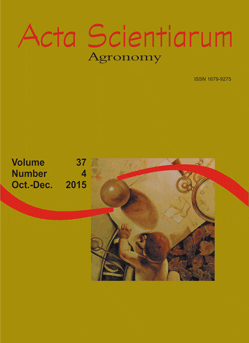<b>Chemical composition of grains from glyphosate-resistant soybean and its conventional parent under different edaphoclimatic conditions in Brazil
Resumo
Glyphosate-tolerant (Roundup Ready®, RR) soybean is the most widely cultivated genetically modified crop in the world. The aim of this study was to evaluate, in a long-term field experiment, the chemical composition of grains in a pair of cultivars composed of the conventional parent (BRS 133) and the nearly isogenic transgenic (BRS 245RR) soybean. Plants were cropped under two different edaphoclimatic conditions in Brazil. The experiments began during the 2003/2004 growing season; samples were collected during the 2011/2012 harvest. Were quantified the contents of isoflavones (high performance liquid chromatography), fatty acids (gas chromatography), lipid and proteins (near infrared spectroscopy in the NIR - Near Infrared Reflectance) and minerals (atomic absorption flame spectrophotometry). All samples were analyzed in three replications. Major differences were observed between the two cultivation locations. In Ponta Grossa, which has lower temperatures and higher rainfall during the grain filling period, the contents of lipids and isoflavones were higher. In Londrina, which hassoil with higher fertility, the contents of minerals, proteins and carbohydrates in soybean grains were higher. Significant differences were observed between the cultivars. The conventional parent had higher protein contents and lower lipid contents. The transgenic soybean line had higher isoflavone contents.
Downloads
DECLARAÇÃO DE ORIGINALIDADE E DIREITOS AUTORAIS
Declaro que o presente artigo é original, não tendo sido submetido à publicação em qualquer outro periódico nacional ou internacional, quer seja em parte ou em sua totalidade.
Os direitos autorais pertencem exclusivamente aos autores. Os direitos de licenciamento utilizados pelo periódico é a licença Creative Commons Attribution 4.0 (CC BY 4.0): são permitidos o compartilhamento (cópia e distribuição do material em qualqer meio ou formato) e adaptação (remix, transformação e criação de material a partir do conteúdo assim licenciado para quaisquer fins, inclusive comerciais.
Recomenda-se a leitura desse link para maiores informações sobre o tema: fornecimento de créditos e referências de forma correta, entre outros detalhes cruciais para uso adequado do material licenciado.




















































